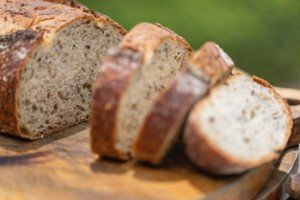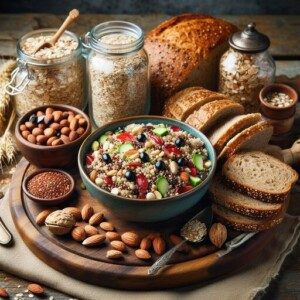Whole grains are good for someone with type 2 diabetes, but is it a far reach to think that whole grains can outright prevent this metabolic disease?
In type 2 diabetes, the pancreas produces insulin, but the body’s ability to use it for energy is impaired.
As a result, blood sugar (glucose) builds up in the blood.
To control this, the patient is urged to exercise every day (to improve glucose uptake by muscle cells and thus help prevent high blood sugar) and follow a healthy diet.
Whole Grains and Type 2 Diabetes: the Benefits
“Eating more whole grain foods — rye bread, whole grain bread, oatmeal/muesli, wheat, or oats — has been tied to having a lower risk of developing type 2 diabetes in a large study of middle-aged people in Denmark,” says Morton Tavel, MD, Clinical Professor Emeritus of Medicine, Indiana University School of Medicine, and author of “Health Tips, Myths and Tricks: A Physician’s Advice.”
The Study
Healthy subjects 50 to 65 who ate the most whole grains had a 30 percent lower risk of type 2 diabetes by age 65 to 80, when compared to similar age subjects who ate the fewest whole grains.
Best Type of Whole Grains
So if you want to lower your chances of developing type 2 diabetes and just learned that whole grains are beneficial to glucose metabolism – then opt for whole grains and restrict, if not entirely eliminate, white flour.

• White rice becomes brown or wild rice.
• White English muffins and dinner rolls become whole grain.
• This switch applies to all sorts of foods including cereal.
Dr. Tavel explains, “In the United States, dietitians advise people — when opting for grains, make most of them whole grains, and look for the 100% whole grain stamp and the word whole in the ingredient list.”
This doesn’t mean fill up on whole grain Pop Tarts, whole grain bagels loaded with sugary apple butter or heaps of sugary jam, or gorging on a stack of whole grain pancakes drenched in sugary syrup.
Even whole grain breads that say “Natural” on the package can have lots of added sugar.
Products that say “Whole Grain” on their packaging may also contain high fructose corn syrup – the last thing a diabetic needs.
So make sure you pick the best of the whole grains lot. Foods with the fewest ingredients are less processed and have less total sugar than their counterparts with a huge list of ingredients.
That whole grain chicken pot pie with 87 ingredients? Ditch it and opt for the one with only 14 ingredients.
“Finally, whole grains also include the starchy endosperm, germ and bran, whereas refined grains lack the germ and bran,” says Dr. Tavel.
Preventing Type 2 Diabetes
Here are the symptoms of diabetes:
• Excessive thirst for no apparent reason
• Excessive urination
• Unexplained hunger
• Unexplained weight loss especially despite eating more
• Fatigue for no reason
• Blurry vision
• Slow healing sores
Depending on what kind of health professional you speak to, you will hear varying ways to prevent this common metabolic disorder – which is becoming more common in Americans under age 18.
These tactics include never becoming overweight, exercising rigorously most days of the week, avoiding excess sitting and eating processed foods only sparingly.
Other health professionals will say that there’s no way to guarantee the prevention of type 2 diabetes, especially if you have a family history of this disease.
But one thing’s for sure: Don’t think for a moment that eating a lot of whole grains — while also consuming a lot of processed foods while you avoid an exercise regimen and are overweight will be all it takes to prevent type 2 diabetes.











































